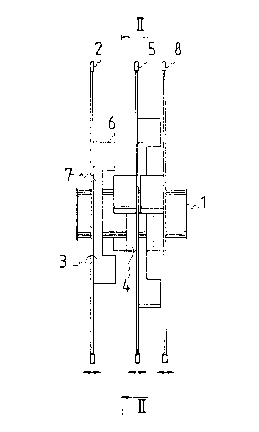Some of the information on this Web page has been provided by external sources. The Government of Canada is not responsible for the accuracy, reliability or currency of the information supplied by external sources. Users wishing to rely upon this information should consult directly with the source of the information. Content provided by external sources is not subject to official languages, privacy and accessibility requirements.
Any discrepancies in the text and image of the Claims and Abstract are due to differing posting times. Text of the Claims and Abstract are posted:
| (12) Patent Application: | (11) CA 2068736 |
|---|---|
| (54) English Title: | CIRCULAR SAW BLADE ASSEMBLY |
| (54) French Title: | ASSEMBLAGE DE LAMES DE SCIE CIRCULAIRE |
| Status: | Deemed Abandoned and Beyond the Period of Reinstatement - Pending Response to Notice of Disregarded Communication |
| (51) International Patent Classification (IPC): |
|
|---|---|
| (72) Inventors : |
|
| (73) Owners : |
|
| (71) Applicants : | |
| (74) Agent: | MARKS & CLERK |
| (74) Associate agent: | |
| (45) Issued: | |
| (86) PCT Filing Date: | 1990-12-05 |
| (87) Open to Public Inspection: | 1991-06-21 |
| Availability of licence: | N/A |
| Dedicated to the Public: | N/A |
| (25) Language of filing: | English |
| Patent Cooperation Treaty (PCT): | Yes |
|---|---|
| (86) PCT Filing Number: | PCT/FI1990/000291 |
| (87) International Publication Number: | WO 1991008875 |
| (85) National Entry: | 1992-05-14 |
| (30) Application Priority Data: | ||||||
|---|---|---|---|---|---|---|
|
ABSTRACT OF THE DISCLOSURE
The present invention concerns a circular saw blade
assembly for a saw mill or similar apparatus used for-sawing
boards from logs, said circular saw blade assembly comprising
at least two circular saw blades (2) attachable to and
axially transferrable on a saw blade spindle (1) as well as
one or several edge milling cutters for shaping the board to
a correct width. The circular saw blade assembly in
accordance with the invention is implemented so that the
edging cutter is formed by edge cutter elements (3, 4)
adapted to adjacent circular saw blades (2, 5), whereby the
cutter elements are axially adjustable in relation to each
other along with the spacing adjustment of the circular saw
blades (2, 5), and each cutter element (3, 4) is comprised of
one or several cutter knives (6) and a block section (7)
having a recess machined to its face opposing the adjacent
cutter element and having a penetrating hole for the saw
spindle (1) to pass, whereby the knives (6) of the adjacent
cutter elements (3, 4) are aligned to rotate along a single
circle with an axial displacement of the elements at the
different points along the cutting circle.
Note: Claims are shown in the official language in which they were submitted.
Note: Descriptions are shown in the official language in which they were submitted.

2024-08-01:As part of the Next Generation Patents (NGP) transition, the Canadian Patents Database (CPD) now contains a more detailed Event History, which replicates the Event Log of our new back-office solution.
Please note that "Inactive:" events refers to events no longer in use in our new back-office solution.
For a clearer understanding of the status of the application/patent presented on this page, the site Disclaimer , as well as the definitions for Patent , Event History , Maintenance Fee and Payment History should be consulted.
| Description | Date |
|---|---|
| Time Limit for Reversal Expired | 1996-06-05 |
| Application Not Reinstated by Deadline | 1996-06-05 |
| Deemed Abandoned - Failure to Respond to Maintenance Fee Notice | 1995-12-05 |
| Inactive: Adhoc Request Documented | 1995-12-05 |
| Application Published (Open to Public Inspection) | 1991-06-21 |
| Abandonment Date | Reason | Reinstatement Date |
|---|---|---|
| 1995-12-05 |
Note: Records showing the ownership history in alphabetical order.
| Current Owners on Record |
|---|
| KAUKO RAUTIO |
| Past Owners on Record |
|---|
| None |